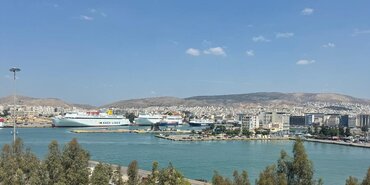Will the use of ECDIS lead to more marine casualties and allegations of unseaworthiness?
By Martyn Haines of Clyde & Co http://www.clydeco.com/
The rationale for the adoption of Electronic Chart Display and Information System (ECDIS) was to contribute to safe navigation; reduce navigational work load; aid passage planning, monitoring and positioning in one system; offer danger warning alarms and provide an efficient facility to update the chart portfolio. If the implementation of ECDIS meets these requirements then its adoption will have the same impact as radar which was introduced in the 1950s. We hope, however, ECDIS will not suffer the same failings as radar: over reliance, crew complacency, or inappropriate and incorrect use as the consequences will be more severe.
The signs suggest that even prior to the mandatory requirements for carriage of ECDIS there have been failures where the system has been employed: to detect small islands; navigate clear of shallow ground; use an echo sounder; check the passage plan, identify navigational aids; use the appropriate chart and failure to keep a proper lookout. All of these situations were attributed to over reliance, complacency, inappropriate and incorrect use of ECDIS equipment. Sound familiar?
Consequential liability costs, in the aftermath of marine casualties, are increasing. It is inevitable that the insurance industry will pick up these costs and, therefore, will be vigorous in their investigations to ascertain the cause. Of major importance will be to conclude the vessel was seaworthy, at the commencement of the voyage, as this may prejudice insurance cover and also the right to seek contributions in the event of salvage and general average. The carrier's ability to rely on the available defences for cargo liability claims may also be prejudiced if the vessel is found to be unseaworthy.
The focus of investigation when grounding, stranding or collision occurs is always the navigation of the vessel. Following adoption of ECDIS the system will be under close scrutiny. Will seaworthiness be a real issue and why is ECDIS a potential problem?
Firstly, the introduction of ECDIS is mandatory with effect from 1st July 2012 for all new passenger ships over 500gt and new tankers over 3,000gt. New cargo ships over 10,000gt and 3,000gt will be required to have ECDIS as their primary means of navigation from 1st July 2013 and 2014 respectively. All existing ships will gradually adopt the system up to 2018. Against a background of low freight rates and poor financial support, owners will want to implement ECDIS at the lowest operational cost. The 'system' includes hardware, software, electronic charts, back-up and, vitally important, navigational officers training which over time, may be the largest financial burden.
Secondly, the regulations, the labyrinth of requirements the 'system' has to meet in order to be approved by the relevant authorities are:
1. SOLAS V Regulation 19.
ECDIS equipment must be type approved to the performance standards set down by IMO.
ECDIS must have approved back-up arrangement in case of breakdown
ECDIS must use official electronic navigational charts (ENC) supplied by an authorised national hydrographic office which are updated using a correction service.
If no ENC is available for the area of navigation an official raster navigational chart (RNC) must be used with a correction service.
ECDIS being used as a primary aid to navigation in raster mode must have a paper chart folio as back-up.
2. FLAG STATE
ECDIS equipment, back-up arrangement, paper chart folio back-up and crew training requirements must be Flag approved for each vessel.
3. STCW 95 Code
In accordance with STCW the navigational officers should possess 'a thorough knowledge and ability to use navigational charts and publications' and 'ECDIS systems are considered to be included in the word charts'.
Under the 2010 Manila Amendments, which became effective from 1st January 2012, generic and type specific training will be required if ECDIS is fitted on board the vessel. Adequate proof of that training for all navigational officers must be available for verification.
4. ISM Code
The ISM Code requires procedures to ensure that the safe operations of vessels operating internationally are in compliance with relevant international and Flag State legislation. The Designated Person Ashore (DPA), who has direct access to the "highest" level of management, has to ensure the shipboard Safety Management System includes instructions and procedures for the safe operation of ECDIS which includes training and this will be audited and recorded.
Conclusion
Marine casualties usually result from a combination of causal links with human error seldom missing. The introduction of ECDIS on vessels with officers initially trained on the paper chart navigational system may significantly highlight this cause. Combine this with legislation and commercial pressures on owners, operators, managers and the crew, and the industry may need to recognise its initial shortcomings and plan accordingly. You can adopt and implement change by legislation but the industry has to be aware of the consequences.
- Date
- 08/03/2012





